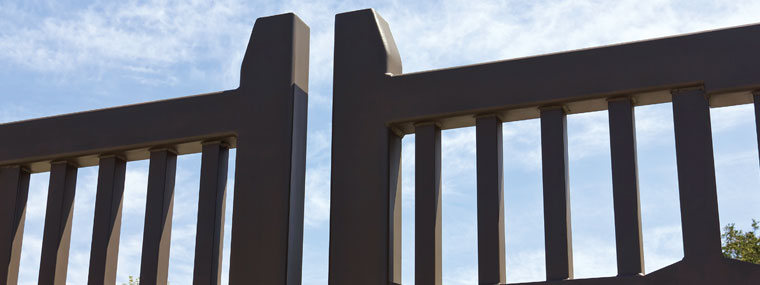
Are You Stuck at the Guard Gate?
The New Era of Residential Security
by Shelly Tygielski / Published May 2014

Security has become the new buzzword among condominium and homeowners associations. Perhaps, that’s because it’s one of the most impactful improvements an association can make. After all, what’s more important than the safety and well-being of residents and their homes? What’s more important than offering peace-of-mind and protecting investments? Forget all the legal reasons communities require security. The real reason is because without it, your quality of life genuinely suffers and, your property values will plummet.
However, like any other industry, time brings new ways of doing things and new ways of thinking. Today, associations have an incredible arsenal of burgeoning technology at their disposal. Concepts that just a few years ago were science fiction are now being integrated and employed at residential communities coast to coast. It’s a good thing, too, because it’s a new world out there. Threats are bigger. Crime has become a state-of-the-art pursuit. In other words, that guard gate or front desk is probably not enough anymore.
Hope is Not a Strategy
Not long ago, a typical scenario would go something like this—a perpetrator would enter the property, and everyone would hope a guard would be in the right place, at the right time, to do something about it. If not, then it was time to fast-forward through hours of video hoping the on-site cameras captured the incident. Hope is not exactly a sound or efficient security strategy. More and more communities and security companies are realizing that prevention is the very best form of protection. Associations today must shift their mindset from “capturing” incidents on old-fashioned surveillance cameras to preventing them and stopping them in their tracks using today’s advanced security and real-time monitoring technology. This shifts the approach from a forensic one to a preventative one.
Biometrics and “Smart” Cameras”
The paradigm shift to preventive security measures is being sparked by new breakthroughs in biometric science and camera technology. Imagine an access control system that reads the contours and unique features of a person’s face to grant or deny entrance. Imagine security cameras that don’t wastefully run all day long, but rather switch on the moment they detect motion, heat signature changes, light changes, sound, and other parameters. Imagine these same cameras sending real-time video feeds to off-site monitoring stations where remote officers can assess the situation as it unfolds and immediately call in the proper authorities. These are all actual technologies available in today’s security market, and new advancements are being made every single day. The question that board members should ask themselves is a simple one: Is the security in your community up to the challenge? Are your homes really protected? Has your association fallen into the trap of complacency? Have you neglected to properly assess your security risks and challenges simply because you already have a system in place—even though that system is based on technology and plans that are decades old? Is “hope” your strategy?
Misconceptions are a High-Security Risk for Associations
More often than not, associations are in a tough position. Budgets are tight. Income is precious. However, it’s simply not true that improving technology is cost-prohibitive. Whether it’s in security or any other industry, today’s tech savvy providers understand that delivering economies of scale is ultimately crucial to their success. In fact, many new security and surveillance solutions are designed to integrate with a community’s current systems and traditional cameras. This keeps start-up costs down, while delivering tremendous service improvements and long-term savings. Additionally, many communities are able to reduce manpower costs for guards and patrols by implementing new technology solutions.
The newest applications for facial recognition technology and analytic cameras can integrate with almost any existing surveillance technology in the marketplace today. A security company’s goal should be to capitalize on your community’s existing solution and augment it in an affordable way. Even when that is not possible, the technology should be designed to deliver immediate reductions in operating costs and pay for itself in a few years.
The good news is that learning more is easy. Any reputable security company should offer your association a free, no-obligation evaluation of your community’s needs and risks. This should include a plan of action with an itemized breakdown of recommended technology and the associated costs.
At the end of the day, security is no different than any other area of an association’s management responsibilities. It’s important to look at the big picture. It’s important to weigh all your options. Jumping to conclusions usually leads to missed opportunities.
Finding the Balance
Never for a moment should you think that new security technology needs to replace the need for quality people and old-fashioned vigilance. This just isn’t true and, in fact, has never been the goal of the industry’s high-tech leaders.
Security advancements exist to improve overall performance. They help good people work smarter when implemented as part of a comprehensive program built around the unique needs of a condominium or HOA community.
The trick is to find the right balance. Doing so means exploring all the possibilities on the table. Guard gates and front desks are great. But if that’s where your security solution begins and ends, perhaps you’re stuck, and it’s time to think about a new approach?

